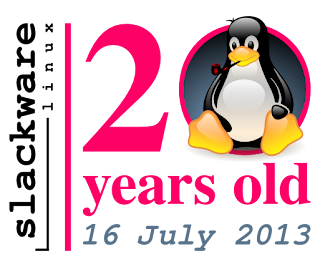Version 1.3
* Slackware.Linux.Domed.Tux.Logo
* Slackware.Linux.Eggstone.Tux.Logo
* Slackware.Linux.Power.Button.Logo
* Slackware.Linux.Power.Button.Logo.with.It.powers.up.freedom
* Slackware.Linux.Classic.SuperTux.Logo.with.Pelerine
* Slackware.Linux.Crystallized.SuperTux.Logo.with.Pelerine
* Slackware.Linux.Classic.SuperTux.Logo.without.Pelerine
* Slackware.Linux.Crystallized.SuperTux.Logo.without.Pelerine
* Slackware.Linux.Superman.Logo
* Slackware.Linux.GNU.Logo.with.Classic.Tux
* Slackware.Linux.GNU.Logo.with.Crystallized.Tux
* Slackware.Linux.System.Case.Sticker.Logo
* Slackware.Linux.GNU.Linux.Slackware.Three-digit.Black.Logo
* Slackware.Linux.GNU.Linux.Slackware.Three-digit.Grey.Logo
* Slackware.Linux.Traditional.Logo.with.Classic.Tux
* Slackware.Linux.Traditional.Logo.with.Crystallized.Tux
* Slackware.Linux.Traditional.Logo.with.Domed.Tux
* Slackware.Linux.Traditional.Logo.with.Eggstone.Tux
Version 1.2
* Slackware.Linux.Phear.the.Penguin.Logo.with.Classic.Tux
* Slackware.Linux.Phear.the.Penguin.Logo.with.Crystallized.Tux
* Slackware.Linux.Classic.Tux.Logo
* Slackware.Linux.Crystallized.Tux.Logo
* Slackware.Linux.Download.Logo
* Slackware.Linux.ARMedslack.Logo
* Slackware.Linux.ARMedslack.Logo.with.Home.Page
* Slackware.Linux.slackARM.Logo
* Slackware.Linux.slackARM.Logo.with.Home.Page
* Slackware.Linux.slack390.Logo
* Slackware.Linux.slack390.Logo.with.Home.Page
* Slackware.Linux.Powered.Logo.with.Classic.Tux
* Slackware.Linux.Powered.Logo.with.Crystallized.Tux
Version 1.1
* Slackware.Linux.KDE.Logo
* Slackware.Linux.XFCE.Logo
* Slackware.Linux.Documentation.Project.Logo
* Slackware.Linux.Traditional.Logo.v2
* Slackware.Linux.Bag.Badge.Logo.v2
* Slackware.Linux.Current.Branch.Logo
* Slackware.Linux.Current.Branch.Logo.v2
* Slackware.Linux.Current.Branch.Logo.v3
* Slackware.Linux.Current.Branch.Logo.v4
Version 1.0
* Slackware.Linux.Traditional.Logo
* Slackware.Linux.Traditional.Logo.with.Home.Page
* Slackware.Linux.Traditional.Logo.with.Because.It.Works
* Slackware.Linux.Traditional.Logo.with.Because.It.Secures
* Slackware.Linux.Traditional.Logo.with.Tux
* Slackware.Linux.Spherical.Logo
* Slackware.Linux.Blurred.Spherical.Logo
* Slackware.Linux.Favicon.Logo
* Slackware.Linux.Bag.Badge.Logo
* Slackware.Linux.Security.Shield.Logo




























